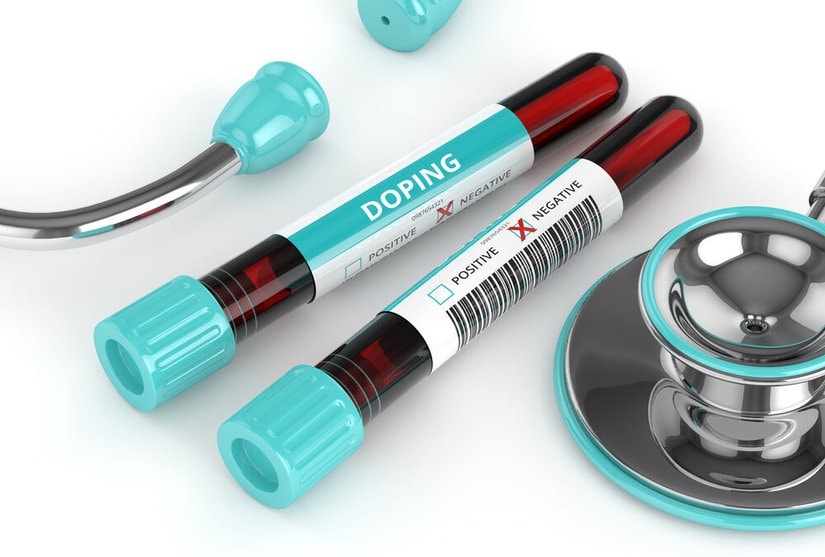The Truth About Blood Doping In Sports

Blood doping has become a notorious and controversial topic in the world of sports, particularly in endurance events such as cycling and long-distance running. The practice involves artificially increasing the number of red blood cells in the body, which can lead to improved oxygen delivery to muscles and enhanced athletic performance.
While blood doping has been used for decades, its use in professional sports has been strictly prohibited due to its potential health risks and ethical concerns.
This article aims to explore the truth about blood doping in sports by examining its history, risks, and ethical implications. We will also discuss alternative methods of enhancing athletic performance and the current anti-doping policies and regulations in place to prevent blood doping in professional sports.
By understanding the facts and controversies surrounding blood doping, we hope to provide a comprehensive overview of this topic to inform and educate readers.
Key Takeaways
- Blood doping is the artificial increase of red blood cells to improve athletic performance and is prohibited in professional sports due to potential health risks and ethical concerns.
- Blood doping can be achieved through blood transfusions or use of erythropoietin (EPO), and the risks include increased blood viscosity, blood clots, heart attacks, strokes, transmission of diseases, immune response, and flu-like symptoms.
- Athletes who engage in blood manipulation techniques put their health at serious risk, and anti-doping policies and regulations are crucial for maintaining the integrity of competitive events and ensuring the safety of athletes.
- Legal supplements and alternative methods of enhancing athletic performance are being explored, but they raise ethical, safety, and effectiveness concerns, and blood doping undermines the integrity of sports and sets a bad example for young athletes.
What is Blood Doping and How Does it Work?
The process known as blood doping, which involves artificially increasing the number of red blood cells in an athlete’s body, has been a controversial and widely debated topic in the world of sports. The goal of blood doping is to enhance an athlete’s performance by increasing the amount of oxygen that can be delivered to the muscles.
This is accomplished by either increasing the number of red blood cells in the athlete’s body or by increasing the concentration of hemoglobin, which is the protein that carries oxygen in the red blood cells.
There are several methods of blood doping, including blood transfusions and the use of erythropoietin (EPO), which is a hormone that stimulates the production of red blood cells.
Blood transfusions involve taking blood from a donor and injecting it into the athlete’s body. EPO, on the other hand, can be injected directly into the athlete’s bloodstream to stimulate the production of red blood cells.
While blood doping can improve an athlete’s performance, it is also associated with several health risks, including increased risk of heart attack, stroke, and blood clots.
A Brief History of Blood Doping in Sports
Throughout history, athletes have sought ways to gain a competitive edge, leading to the development of various performance-enhancing techniques. One such method is blood doping, which involves manipulating the body’s blood supply to increase oxygen-carrying capacity and enhance athletic performance. Blood doping has been used in various sports, including cycling, cross-country skiing, and endurance running.
The practice of blood doping dates back to the 1960s when athletes began experimenting with blood transfusions to improve performance. In the 1980s, the use of erythropoietin (EPO), a hormone that stimulates the production of red blood cells, became popular among athletes. However, the use of EPO was banned in 1990, leading to the resurgence of blood doping through blood transfusions.
Despite the dangers associated with blood doping, including increased risk of heart attacks and strokes, some athletes continue to use the technique to gain a competitive edge.
The Risks and Dangers of Blood Doping
Athletes who engage in blood manipulation techniques for performance enhancement put their health at serious risk. The process of blood doping involves increasing the number of red blood cells in the body, which in turn enhances the oxygen-carrying capacity of the blood. This increases an athlete’s endurance and performance. However, the practice is illegal and has been linked to numerous health problems.
The risks of blood doping include increased blood viscosity, which can lead to blood clots, heart attacks, and strokes. The use of contaminated needles and unsanitary practices can also result in the transmission of diseases such as HIV and hepatitis. Additionally, the body may reject the transfused blood, leading to an immune response that can cause fever, chills, and other flu-like symptoms. The table below summarizes the risks and dangers associated with blood doping.
| Risks and Dangers of Blood Doping |
|---|
| Increased blood viscosity |
| Blood clots |
| Heart attacks |
| Strokes |
| Transmission of diseases |
| Rejection of transfused blood |
| Immune response |
| Flu-like symptoms |
The use of blood doping in sports is not only unethical but also poses a serious risk to the health of athletes. The dangers associated with the practice outweigh any potential performance benefits. Athletes should prioritize their health and well-being over short-term gains and avoid engaging in blood doping techniques.
The Ethics of Blood Doping in Professional Sports
Professional sports organizations face a complex ethical dilemma when it comes to regulating performance-enhancing methods. On the one hand, they want to ensure that athletes compete on a level playing field and that no one has an unfair advantage. On the other hand, they must balance this desire for fairness with the athletes’ right to autonomy and the pressure to put on a good show for fans and sponsors.
Blood doping, in particular, presents a challenge for sports organizations. While it can improve an athlete’s performance, it also poses serious health risks. Additionally, it can be difficult to detect and regulate.
Some argue that it should be allowed, as athletes should have the right to choose what they do with their own bodies. Others argue that it should be banned, as it goes against the spirit of fair competition and puts athletes who choose not to dope at a disadvantage.
Ultimately, the ethics of blood doping in professional sports is a complicated issue with no easy answers.
Famous Athletes Caught Blood Doping
Several high-profile competitors have been exposed for using performance-enhancing methods, including blood doping. The use of blood doping in sports is not only illegal, but also poses serious health risks to athletes. It is important for athletes to compete fairly and for governing bodies to enforce anti-doping regulations to ensure a level playing field.
Here are two famous athletes who were caught using this method:
- Lance Armstrong: The former professional cyclist admitted to using blood doping during his career, which helped him win seven consecutive Tour de France titles from 1999 to 2005. He was stripped of all his titles and banned from professional cycling for life in 2012 after an investigation by the United States Anti-Doping Agency.
- Marion Jones: The former track and field athlete won three gold and two bronze medals at the 2000 Olympic Games in Sydney. However, in 2007, she admitted to using blood doping and other performance-enhancing drugs during her career, and was stripped of all her medals. She also served six months in prison for lying to federal investigators about her drug use.
Anti-Doping Policies and Regulations
Regulations and policies against the use of performance-enhancing methods are crucial for maintaining the integrity of competitive events and ensuring the safety of athletes. Anti-doping policies and regulations are designed to prevent athletes from using banned substances or methods to gain an unfair advantage over their competitors. These policies are enforced by various organizations, including the World Anti-Doping Agency (WADA), which sets the standards for anti-doping policies worldwide.
The WADA Code defines the prohibited substances and methods that athletes cannot use, and it outlines the testing procedures and sanctions for athletes who test positive for banned substances. Athletes who violate anti-doping policies can face severe consequences, including disqualification from competitions, loss of medals, fines, and even bans from their sport. The table below provides a summary of the WADA Code’s prohibited substances and methods, along with their effects on the body and the risks associated with their use. By implementing strict anti-doping policies and regulations, sports organizations can help ensure that athletes compete on a level playing field and that their health and safety are not compromised.
| Prohibited Substance/Method | Effects on the Body | Risks |
|---|---|---|
| Anabolic Steroids | Increases muscle mass and strength | Liver damage, heart disease, hormone imbalances |
| Erythropoietin (EPO) | Increases red blood cell production for improved endurance | Blood clots, stroke, heart attack |
| Human Growth Hormone (HGH) | Promotes muscle growth and recovery | Diabetes, joint pain, cardiovascular disease |
| Blood Doping | Increases oxygen-carrying capacity of blood | Blood clots, stroke, heart attack |
Alternative Methods of Enhancing Athletic Performance
In recent years, there has been growing interest in exploring alternative methods of enhancing athletic performance that do not involve banned substances or methods. Some athletes turn to legal supplements such as creatine, caffeine, and beta-alanine to improve their endurance, strength, and power. Others try unconventional techniques such as cryotherapy, oxygen therapy, and hyperbaric chambers to speed up their recovery and reduce their fatigue. While these methods are not prohibited by anti-doping agencies, they still raise ethical, safety, and effectiveness concerns among experts and stakeholders.
- Ethical: Athletes who use legal supplements or alternative methods may gain an unfair advantage over their competitors who rely solely on their natural abilities and hard work. They may also violate the spirit of fair play, the trust of fans and sponsors, and the integrity of the sport.
- Safety: Athletes who use legal supplements or alternative methods may expose themselves to health risks such as liver damage, dehydration, heart palpitations, and insomnia. They may also mask the symptoms of underlying health problems or injuries and delay their diagnosis and treatment.
- Effectiveness: Athletes who use legal supplements or alternative methods may not achieve the desired results or may experience placebo effects. They may also waste their time, money, and energy on products or services that have little or no scientific evidence to support their claims.
- Perception: Athletes who use legal supplements or alternative methods may be perceived differently by the public, the media, and the authorities. They may be seen as innovative, strategic, and resourceful, or as desperate, naive, and gullible. They may also attract scrutiny, suspicion, and criticism from those who question their motives and methods.
The Future of Blood Doping in Sports
The use of erythropoietin (EPO) and other blood-boosting agents continues to pose a challenge to the integrity of endurance sports and calls for further research and vigilance. While the introduction of biological passports and increased testing has made it more difficult for athletes to engage in blood doping, the allure of improved performance remains. There is also concern that new, undetectable methods of blood doping may emerge in the future, making it even more challenging to maintain a level playing field.
To better understand the potential impact of blood doping in sports, it is important to consider the advantages and disadvantages of this practice. The following table summarizes some of the key aspects of blood doping, including its effects on performance, potential health risks, and ethical considerations. By examining these factors, athletes, coaches, and sports organizations can make informed decisions about whether or not to engage in blood doping and how to address this issue within the broader context of sports integrity.
| Aspect | Advantage | Disadvantage |
|---|---|---|
| Performance | Increased oxygen delivery to muscles, improved endurance | Increased risk of blood clots, heart attack, stroke |
| Health Risks | None when done under medical supervision | Increased risk of transmission of blood-borne diseases, potential long-term health effects |
| Ethical Considerations | Unfair advantage, violates the spirit of fair play | Undermines the integrity of sports, sets a bad example for young athletes |
Ultimately, the future of blood doping in sports depends on continued efforts to detect and deter this practice, as well as an ongoing commitment to promoting clean, fair competition. By working together to address this issue, athletes and sports organizations can help to ensure that endurance sports remain a showcase for human achievement, skill, and determination.
Conclusion
In conclusion, blood doping is a dangerous practice that has tainted the world of professional sports. The use of erythropoietin and blood transfusions to boost athletic performance not only violates ethical principles but also poses serious health risks to athletes.
The history of blood doping in sports reveals a persistent culture of cheating and a lack of effective regulation. However, the fight against blood doping has gained momentum in recent years, with anti-doping policies and regulations being established and enforced.
As the world of professional sports continues to evolve, alternative methods of enhancing athletic performance are being explored. The future of blood doping in sports is uncertain, but it is clear that the health and safety of athletes must be prioritized over the pursuit of victory.
It is essential for athletes, coaches, and governing bodies to uphold ethical standards and commit to fair play. Only then can we ensure that sports are a source of inspiration and admiration, rather than scandal and corruption.








